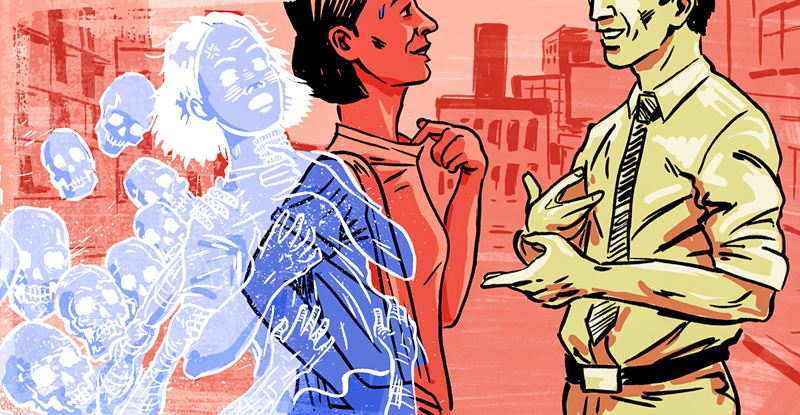Social Anxiety
Social Anxiety Disorder
Social anxiety disorder is the third largest mental health care problem in the world today exceeded only by alcoholism and depression. It is one of the least understood anxieties.
Most sufferers believe that their symptoms are unique and do not recognise just how widespread the problem is. Individuals will often make major changes to their lifestyle in order to adapt to their illness.
The fear of social situations can trigger feelings of being self conscious, the perception of being judged, scrutinised and the dread of being criticised. The intense feelings of fear can lead to physical symptoms such as extreme blushing, trembling and sweating. Nausea, palpitations, stammering and panic attacks are also common.
This is a very debilitating disorder which can affect all areas of life including the ability to work, socialise, even stepping outside the front door can be prohibitive!
Professor Mark Baker, Director of the Centre for Clinical Practice at NICE, said: “Social anxiety disorder isn’t about being shy at parties or feeling anxious about a job interview, it’s about experiencing a level of anxiety that can disrupt normal life, interfering with social relationships and affecting performance at work or school. In these cases, it is really important that the individual is able to get the right help.”

How can Hypnotherapy help?
I don’t think you can have a relationship with anxiety unless something has triggered it from the past.
Anxiety is something from the past. Thought about now. Projected into the future.
Hypnotherapy not only deals with your anxious symptoms in the now but delves into your past to find the route cause of the social anxiety. By treating the route cause as well as the symptoms we are working to alleviate the anxiety at its deepest level. When thinking about the future you will find you feel calmer and in control. This helps to create a positive cycle where you find yourself feeling confident about the future so relaxed in the present.

Further reading
“Calm down. Stop stressing so much.”
Have you ever been told that before? Or, “there’s nothing to worry out about. Just don’t think about it so much.” If only it were that simple.
Most of the time you know there’s nothing to worry out about, that you need to get over it and life would be easier if you just didn’t think about it so much. You know that your mind is overreacting, but it feels impossible to stop the endless loop of worry.
This constant stress of feeling that things will somehow turn out bad might cause a tight knot in your stomach or tightness in your chest. Your mind might race when you’re anxious, trying to sort through all of the information coming at you trying to find the “bad thing.” Then, because you are overwhelmed with all of your thoughts, the smallest incident can set you off. Or, you might be having the totally opposite experience; anxiety might be causing you feel totally detached and as if you are not even in your body. The experience of anxiety is as unique as the person experiencing it.
SAD
Social anxiety disorder (SAD) involves a fear of social and performance situations in which others may negatively judge you. Although it’s common for people to experience some nervousness or feel “butterflies” in their stomach, most people with the disorder are extremely self-conscious and have physical symptoms such as nausea, shaking, or feeling faint when they are around people or performing. Luckily, there are strategies that help take control of the situation.

2 types of SAD
Generalized Social Anxiety
Those with fears about most social and performance situations were previously categorized as having generalized social anxiety disorder in the DSM-IV, including the following:
- speaking to authority figures
- going on dates
- starting conversations
- giving speeches
- They are usually uncomfortable around anyone but their closest family members or friends.
Generalised SAD is considered to be more severe than performance-only social anxiety disorder and is usually accompanied by greater impairment in day-to-day functioning.
Performance-Only Social Anxiety
A person with performance-only SAD will have anxiety and fear linked to only performance situations. For instance, a person could have a fear of public speaking but experience no anxiety in casual social gatherings.
This form of social anxiety can still be extremely harmful, as it may limit you from career advancement or other performance-related achievements.
People who only fear performance situations tend to be different from those with generalized social anxiety disorder in terms of how old they are when they first experience anxiety, the physical symptoms they experience, and how they respond to treatment.
Symptoms and Diagnosis
The symptoms of social anxiety disorder fall into three categories:
physical (e.g., blushing, sweating, and shaking)
cognitive (e.g., negative thoughts and beliefs)
behavioral (e.g., avoidance and safety behaviors)
